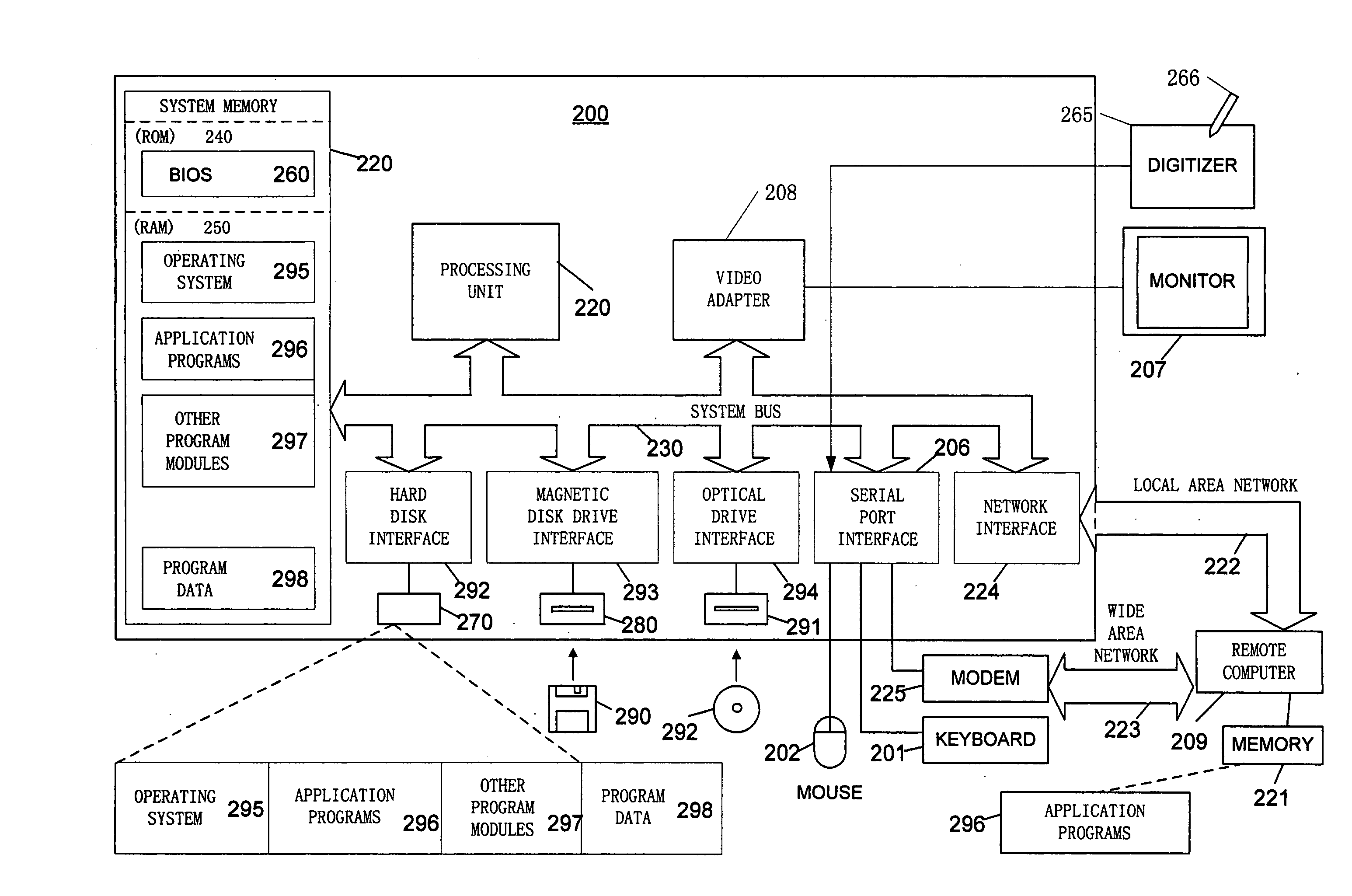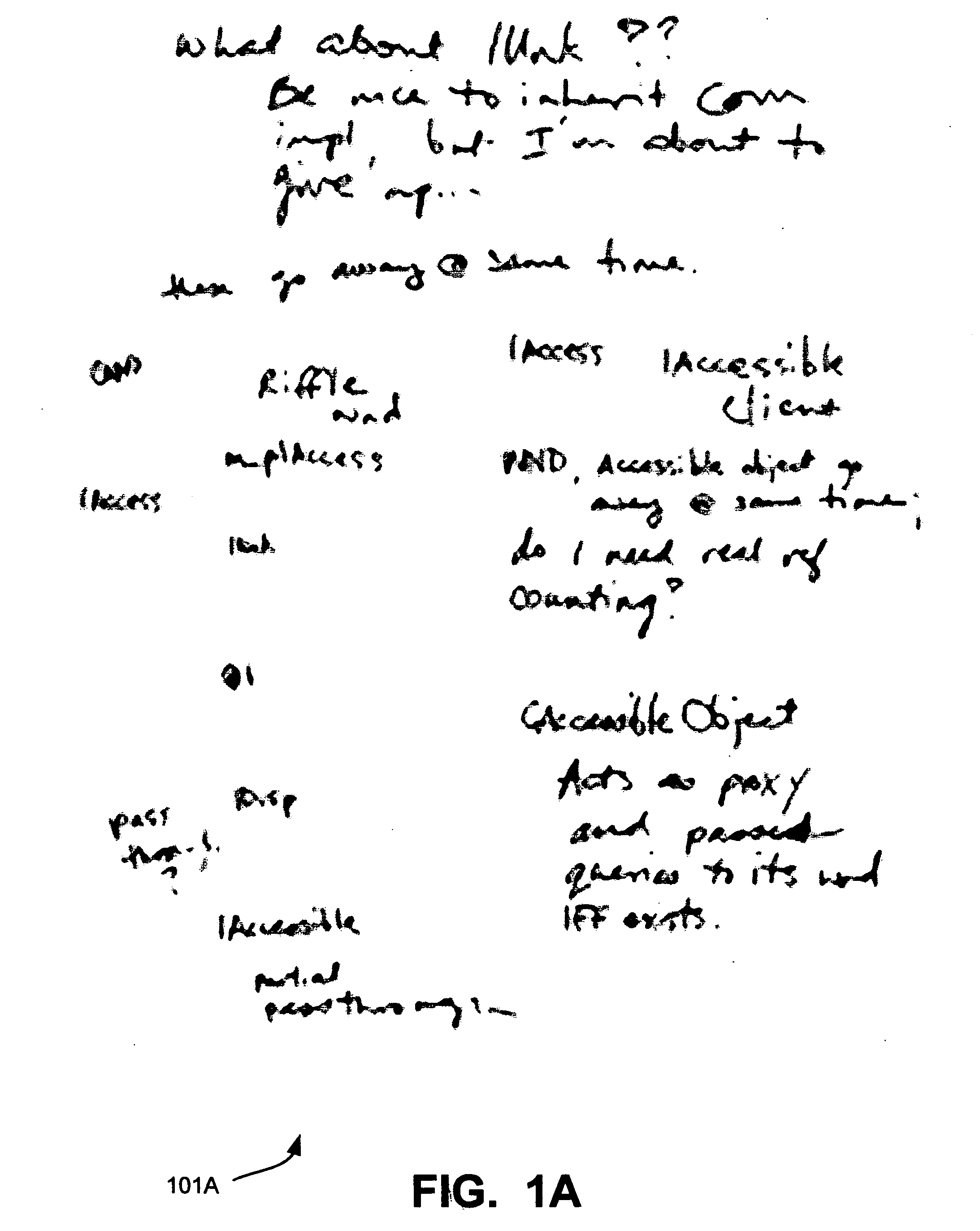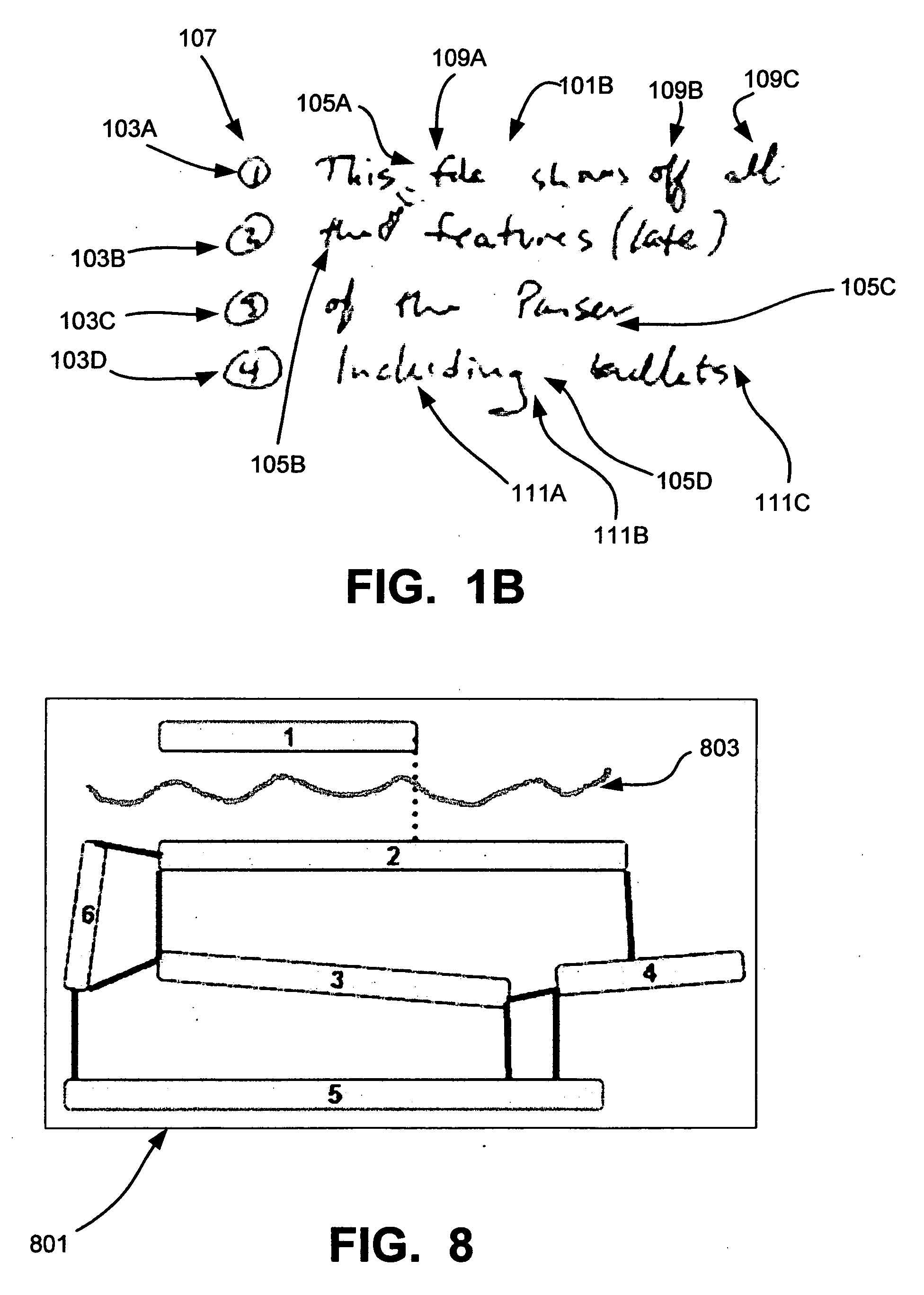Grouping lines in freeform handwritten text
- Summary
- Abstract
- Description
- Claims
- Application Information
AI Technical Summary
Benefits of technology
Problems solved by technology
Method used
Image
Examples
Embodiment Construction
[0020] Overview
[0021] Various examples of the invention provide techniques for grouping strokes of electronic ink into lines. These techniques formulate line grouping as an optimal stroke partitioning problem. Thus, given a page of N strokes, the techniques determine the partitioning π* of the stroke set S among all possible partitions {π|πεII} to optimize the goodness of the resulting lines and the consistency and simplicity of their configuration.
[0022] Various notations will be used herein to describe different aspects of the invention. These notations include:
[0023] s: a stroke, s ε S, represented by an array of sample points pi=(xi, yi), i=1, 2, . . .Ns.
[0024] {l: a hypothesized line group, made up of a set of strokes {s: s ε Sl}.
[0025]π: a hypothesized line partitioning into groups {π|πε II}, made up of a set of lines
[0026] {l:l επ} where ∀(l,n):l,nεπ,l≠nSl∩Sn=Ø and ∪lεπ Sl=S.
[0027] Implementation Environment
[0028] As will be appreciated by those of ordinary skill in t...
PUM
 Login to View More
Login to View More Abstract
Description
Claims
Application Information
 Login to View More
Login to View More - R&D
- Intellectual Property
- Life Sciences
- Materials
- Tech Scout
- Unparalleled Data Quality
- Higher Quality Content
- 60% Fewer Hallucinations
Browse by: Latest US Patents, China's latest patents, Technical Efficacy Thesaurus, Application Domain, Technology Topic, Popular Technical Reports.
© 2025 PatSnap. All rights reserved.Legal|Privacy policy|Modern Slavery Act Transparency Statement|Sitemap|About US| Contact US: help@patsnap.com



